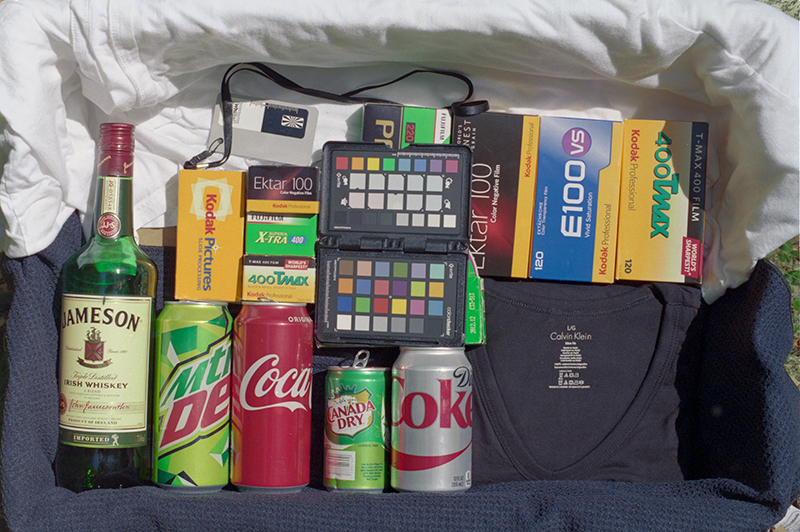Tim Murphy
Well-known
This is interesting, thanks for posting this question
This is interesting, thanks for posting this question
Dear Colonel,
I'm learning a great deal here so I appreciate all the responses.
That said, 4 mixers and bottle of Jameson?
I want to party with you! 😀
Keep the answers coming people!
Regards,
Tim Murphy
Harrisburg, PA 🙂
This is interesting, thanks for posting this question
We've had several threads about "scanning" with a camera, processing in post. Here's the challenge:
As automatic as possible camera-scanning approach for color-negative. I want to camera-scan my near infinite inventory of color negatives shot over the years, so it has to be as simple, fast, and automatic as possible.
Good color, achieved largely with auto settings, not with lots of manual work.
Not about resolution. I'm convinced camera-scans can produce plenty of resolution. 24MPx is plenty for my uses. And, you can always stitch for more pixels, so this is about color, not resolution.
Not Camera-scan vs. Real Scanners -- Please don't comment here about how one should use a real scanner. I know, they do great, this is about how to do camera-scan with good results most efficiently.
A Challenge, and a Prize -- To make this interesting, I'll give-away a good SLR film camera, ready to use, to the contributor who helps me the most. Minolta or Olympus, your choice. Maybe other possibilies TBD.
Game plan -- Here's what I want to do:
- I'll post a test shot, a test box of known colors, shot on color-neg film, then a RAW capture from the negative. We'll start with Fuji 200. I have a lot of negatives on this film stock.
- You process the camera-scan file, describe your nearly-automatic steps, and show the result.
- I'll post what I already know.
- We'll discuss the best approach for this application: nearly-automatic processing of camera-scans to get pretty good color images.
- Then I'll apply the best technique on a real image, maybe a tougher conversion, to see how we have done. You're invited to do the same on one of your images.
Here we go.
This is my test-box, shot with a good digital camera in direct sunlight (October in NH). A color checker, some known saturated colors, very bright white, very dark black (espec. in the shadow). A good gray reference.

That's a Sony A6000 shot, processed in Lightroom, preset = Camera Neutral. To me, this is a bit over-saturated, extra punchy, vs. the original box. That's the way vendors think we like our photos.
Dear Colonel,
I'm learning a great deal here so I appreciate all the responses.
That said, 4 mixers and bottle of Jameson?
I want to party with you! 😀
Keep the answers coming people!
Regards,
Tim Murphy
Harrisburg, PA 🙂










